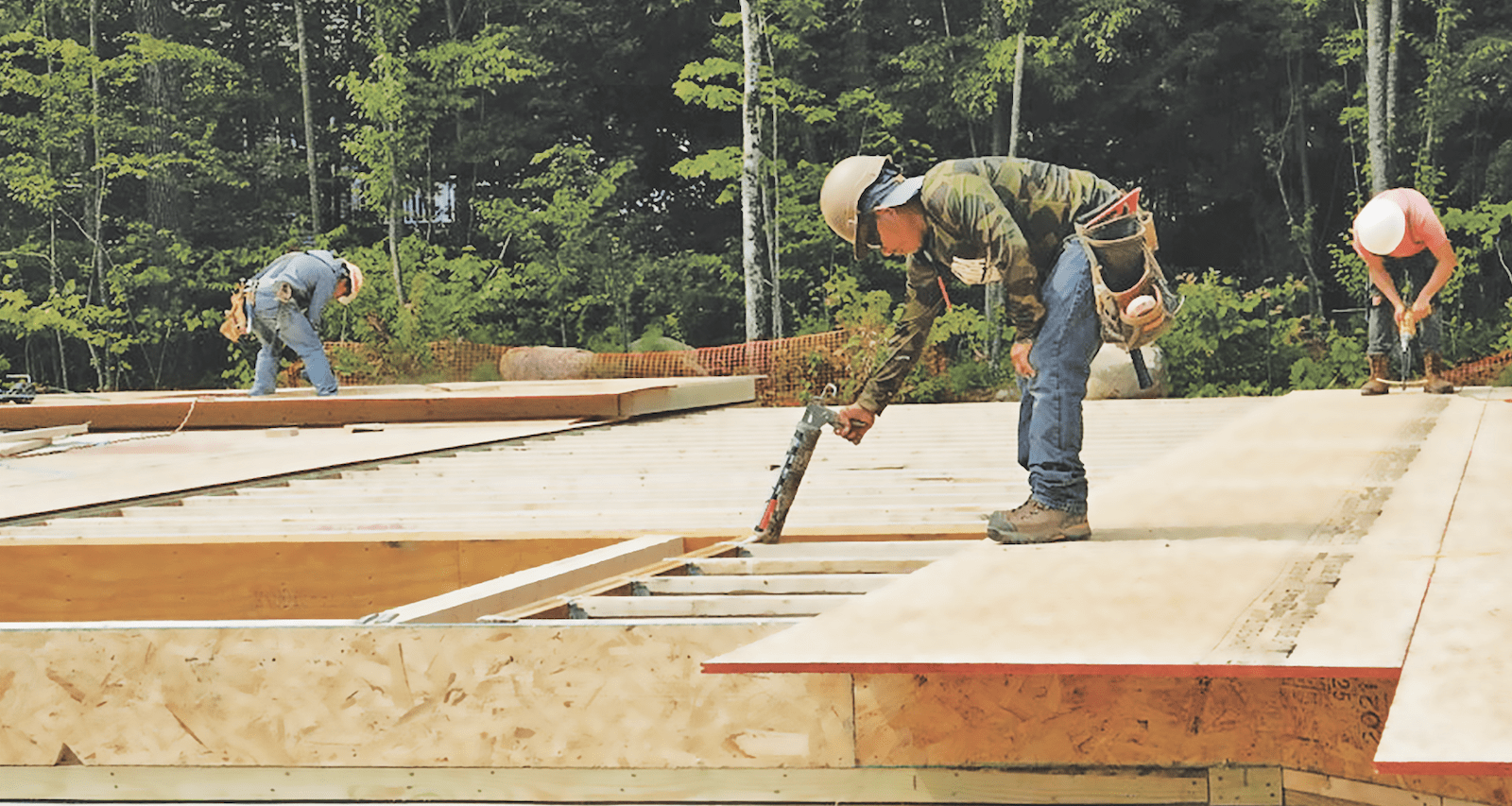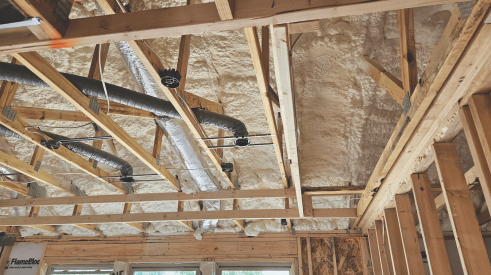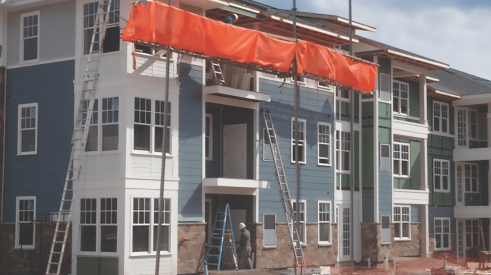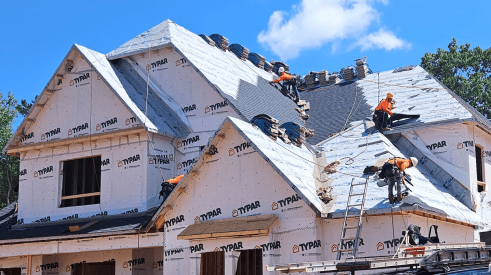Unless your home’s going to be the set for a horror movie, no one likes a new home with squeaky floors that creak and pop.
The problem is that homeowners only notice (and call the warranty department) when their floors make unwanted noises, and then it’s too late to do it right and avoid being haunted by callbacks and customer complaints.
5 Tips for Quiet Floors That Don't Squeak
Consider these five tips to deliver quiet floors and keep homeowners happy, too:
1. To prevent squeaky floors, know your subfloor
Unwanted noises and squeaks in the subfloor can typically be attributed to the use of inferior subflooring material, poor installation practices, or a combination of both.
Spongy floors not only feel inferior and lead to creaks and pops across the finished floor, they can also damage the finished flooring material, causing hardwood floors to cup (or crown) and tile floors to crack.
2. Eliminating squeaks from floors starts with choosing the right subfloor material
Low-quality, commodity-grade subfloor panels are made to meet a lower price point, not a high-performance threshold. In short, you get what you pay for.
Using low-grade materials for the subfloor also places pressure on your framer to install the subfloor panels more precisely and to perhaps sand them down to help mitigate—but probably not completely eliminate—the potential for bounciness, squeaks, and pops.
RELATED
- Builder Reputation Basics: One Make-or-Break Factor You Can't Miss
- Gaps Are Good: Leave Strategic Gaps in Construction to Limit Cracks and Callbacks
- 9 Common Subfloor Installation Mistakes—and How to Avoid Them
Conversely, high-quality subfloor panels come with no-sand guarantees, 50-year (or even lifetime) warranties, and other benefits. When properly specified and installed over the joists, quality panels help ensure floors are quiet and stay that way.
Plywood is a popular subflooring choice because it is strong, durable, and easy to install. Made of wide, long, thin layers of wood veneer glued together, plywood accepts a variety of finished flooring options.
By comparison, oriented strand board (OSB) subfloor panels are made from thinner, smaller wood strands than plywood layers and are pressed together with wax and resin, making them strong and durable.
Homeowners only notice when their floors make unwanted noises, and then it’s too late to do it right.
The debate about whether plywood or OSB is better for subflooring is legendary in the building industry, but the bottom line is that whichever one you specify, make sure it is the correct thickness and load capacity for the floor frame you’ve built and the finish you’ll put on top of it.
3. A quiet floor starts with a quality installation
Choosing the right materials is only half the battle; ensuring a quality installation is equally critical to avoid floor squeaks or an uneven surface. Make sure crews follow these essential tips:
• Slope the floor no more than 3/16 inch over a 10-foot span or 1/8 inch over a 6-foot span. (Ideally, there shouldn’t be any slope.)
• Leave a 1/8-inch gap on all sides of each subfloor panel to allow for expansion and contraction due to seasonal temperature swings and moisture changes. These gaps are very important. If the subfloor isn’t allowed to expand and contract, it will warp and buckle, causing fasteners to loosen and floors to bounce and squeak.
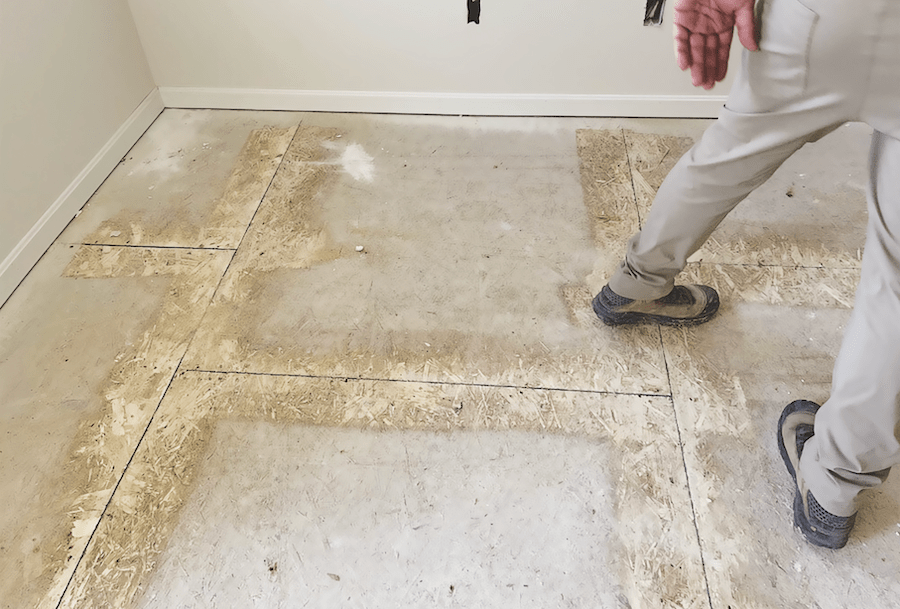
• Glue subfloor panels to the joists before fastening and apply only one panel at a time to maintain the glue’s integrity. Also, polyurethane foam adhesives possess inherent vibration-dampening properties. Commonly used in multifamily and multistory townhomes and clusters, it effectively reduces incidental noise transmission through shared floors and ceilings and minimizes the potential for floor squeaks.
• Fasten subfloor panels to joists using manufacturer-approved screws or ring-shank nails for a far more reliable hold to the framing members.
4. Avoid squeaky floors by framing the floor for silence
So far we’ve focused on the subfloor as the primary culprit of noisy floors, but inadequate joist sizing and spacing or poor installation and using substandard floor framing materials can also lead to structural weaknesses that won’t adequately support the anticipated live and dead loads of the finished floors. The result: bouncy, sagging, or uneven floors that signal a substandard job and undermine your profitability and reputation.
5. Prevent floor squeaks by mitigating moisture infiltration
Finally, proper moisture protection of the entire house—but especially the floor system—is essential to avoid mold growth, wood rot, and warping of the frame and subfloor. Those issues will not only lead to unwanted noises and squeaky floors but also to unpleasant odors ... and a hefty cost to remediate.
The National Wood Flooring Association estimates it costs roughly four to five times more to remediate squeaky floors after a home has closed escrow than if the builder had used premium-quality materials and best installation practices from the start.
How much more motivation do you need for avoiding floor squeaks and all of the associated homebuyer grief that will likely ensue?
Roy Fanara drives quality and performance in home building as a building performance specialist at IBACOS.
Advertisement
Related Stories
Quality Matters
Tips for Placing HVAC Ducts in Conditioned Space
See how putting HVAC ducts inside conditioned space in a home benefits both the builder and the homeowner
Construction
Ladder Safety Tips for Every Jobsite
Like any construction tool, proper and safe ladder and pump jack use requires dedicated training and constant respect
Quality Matters
Don't Underestimate the Importance of Roofing Underlayment
Regardless of which product you choose to use, installing a roofing underlayment will help ensure the roof system withstands the elements and the home stays dry


